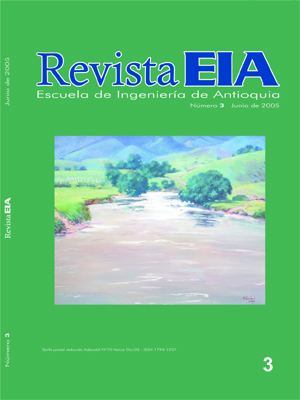EL BANANO VERDE DE RECHAZO EN LA PRODUCCIÓN DE ALCOHOL CARBURANTE
EL BANANO VERDE DE RECHAZO EN LA PRODUCCIÓN DE ALCOHOL CARBURANTE


This work is licensed under a Creative Commons Attribution-NonCommercial-NoDerivatives 4.0 International License.
Copyright statement
The authors exclusively assign to the Universidad EIA, with the power to assign to third parties, all the exploitation rights that derive from the works that are accepted for publication in the Revista EIA, as well as in any product derived from it and, in in particular, those of reproduction, distribution, public communication (including interactive making available) and transformation (including adaptation, modification and, where appropriate, translation), for all types of exploitation (by way of example and not limitation : in paper, electronic, online, computer or audiovisual format, as well as in any other format, even for promotional or advertising purposes and / or for the production of derivative products), for a worldwide territorial scope and for the entire duration of the rights provided for in the current published text of the Intellectual Property Law. This assignment will be made by the authors without the right to any type of remuneration or compensation.
Consequently, the author may not publish or disseminate the works that are selected for publication in the Revista EIA, neither totally nor partially, nor authorize their publication to third parties, without the prior express authorization, requested and granted in writing, from the Univeridad EIA.
Show authors biography
Se describe el estado del conocimiento sobre la producción de alcohol anhidro a partir de banano derechazo mediante un análisis comparativo de los estudios sobre el aprovechamiento de esta fruta en el Urabáantioqueño desde la década de 1980 hasta la actualidad. Contempla su disponibilidad como materia prima, sucomposición química, los procesos fisicoquímicos de transformación del banano en alcohol anhidro y losimpactos ambientales potenciales de esta industria. Si bien es enorme el volumen de banano de rechazo, existe incertidumbre sobre su disponibilidad para la industria del alcohol, ya que se emplea en la producción deabonos y la alimentación animal. No obstante los avances y posibilidades de perfeccionar el proceso tradicional de producción de alcohol anhidro (hidrólisis ácida o enzimática y fermentación alcohólica), la fermentación ABE se perfila como un proceso industrial en el futuro cercano, apoyado en tecnologías de deshidratación como la pervaporación y bioadsorción. A la fecha no se conocen estudios de impacto ambiental de laproducción de etanol a base de banano verde.
Abstract: The state of the art of the anhydrous alcohol production from banana rejects is described by acomparative analysis of the previous studies about the alternative uses of this fruit at Urabá Antioqueño from1980 until now. It takes in consideration the availability of the fruit, its chemical composition, the physico chemical processes involved in the production of anhydrous bioethanol, and the potential environmental impacts ofthis industry. Whereas banana rejects are vast, uncertainty about its availability for the alcohol industry subsists because the fruit is utilized in composting and animal feeding. Although the advancements and possibilities toupgrade the traditional processes (meaning acid or enzymatic hydrolysis and alcohol fermentation), ABE fermentation emerges as an industrial process in the near future, accompanied by dehydration technologies such as pervaporation and bioadsorption. Environmental assessments about the ethanol production from green banana have not been reported thus far.
Article visits 260 | PDF visits 349
